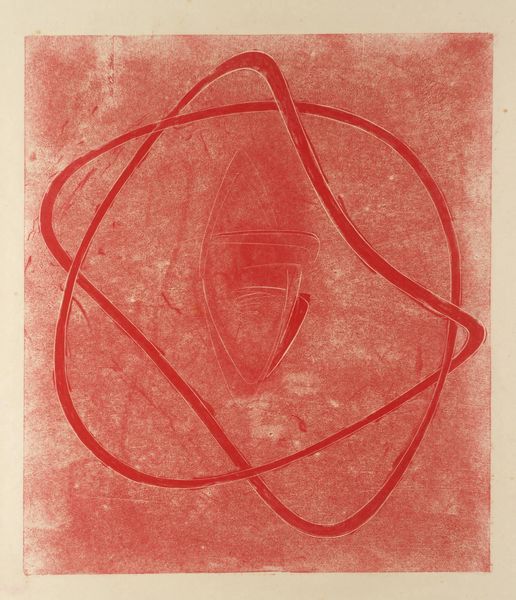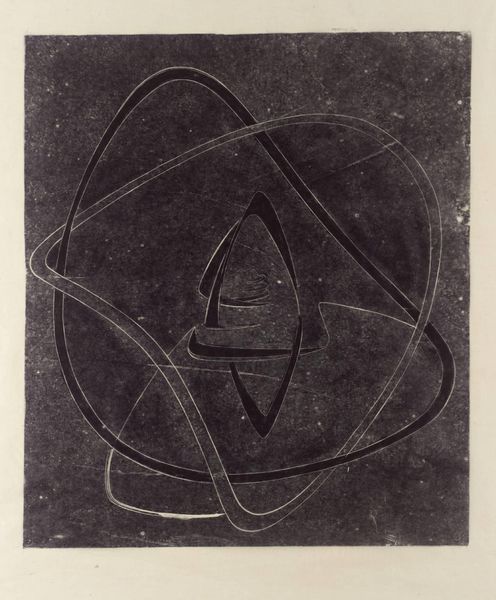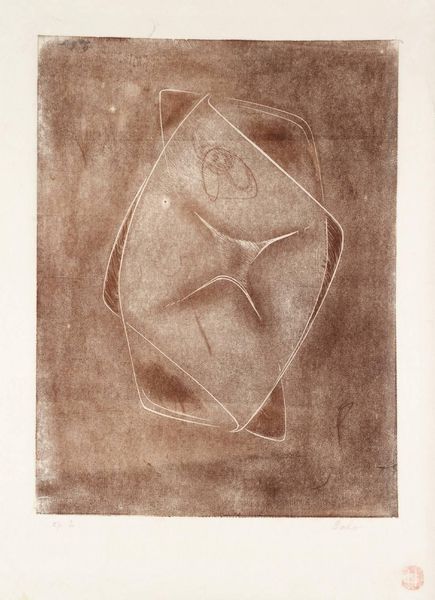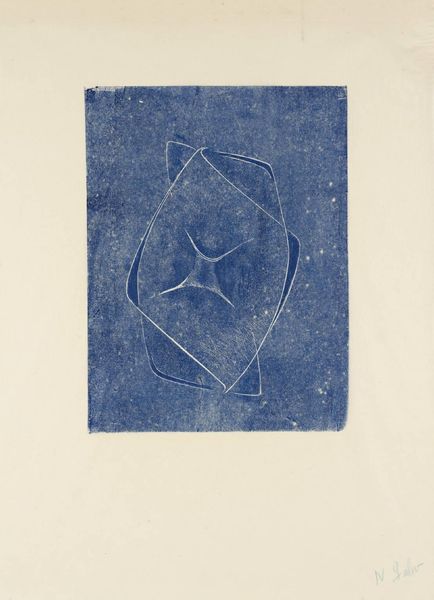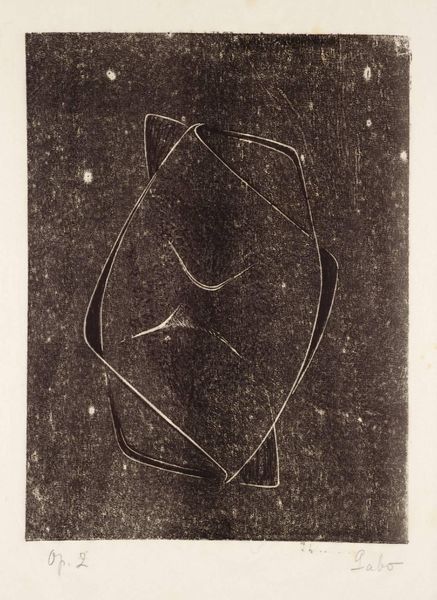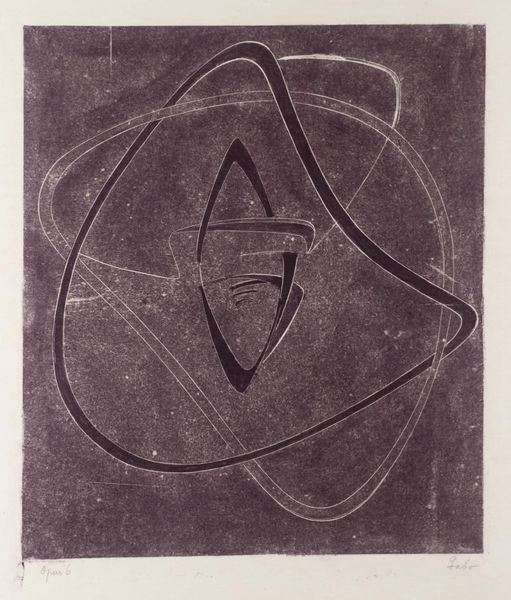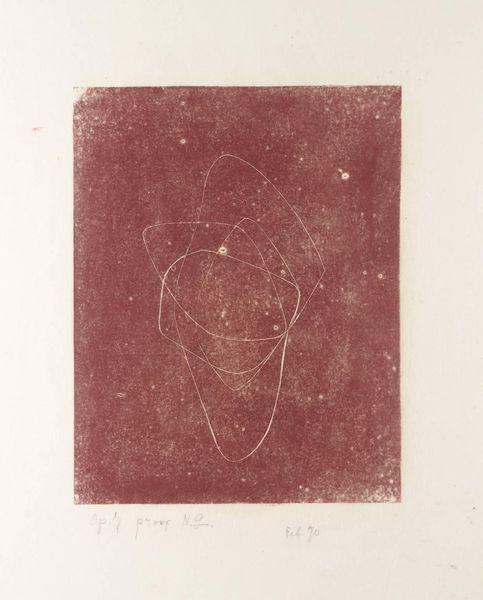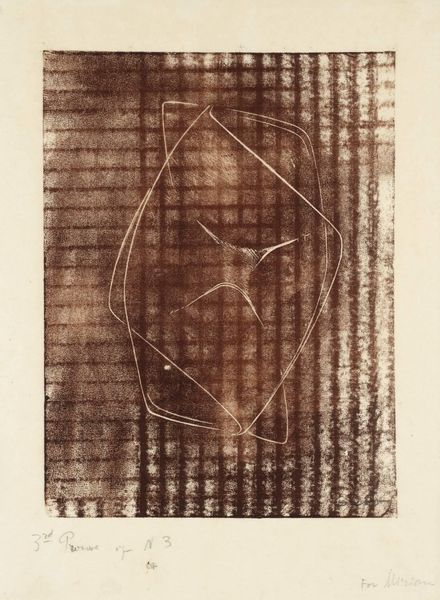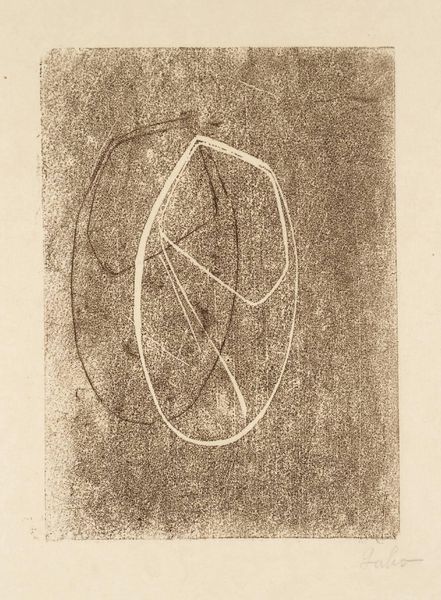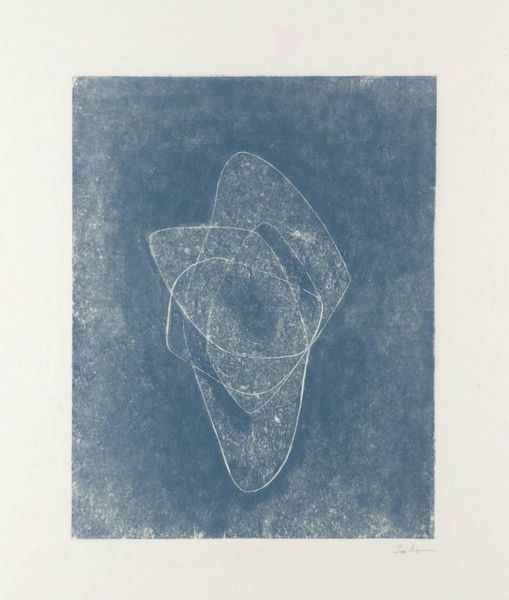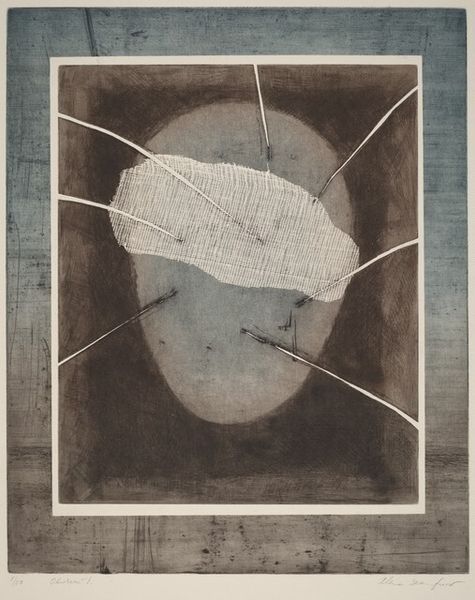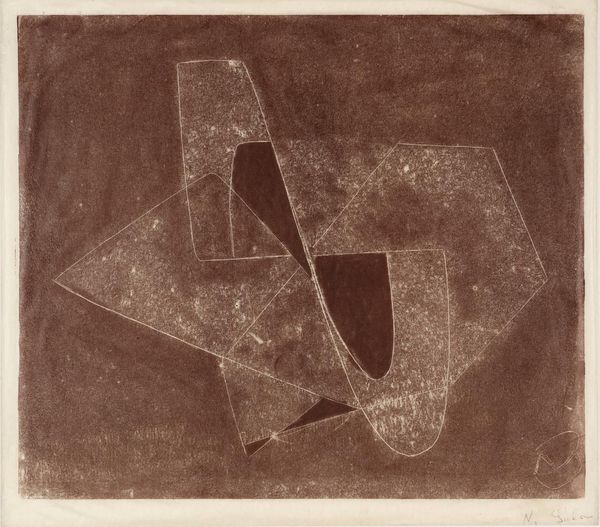
Dimensions: image: 304 x 239 mm
Copyright: The Work of Naum Gabo © Nina & Graham Williams/Tate, London 2014 | CC-BY-NC-ND 4.0 DEED, Photo: Tate
Editor: This is Naum Gabo's "Opus 8," a print held at the Tate. The abstract shapes feel both delicate and architectural to me. What's your take on its place in art history? Curator: Gabo, a key figure in Constructivism, challenged traditional sculpture by using industrial materials and focusing on space and time. How does this print relate to his larger project of redefining art's social role after the Russian Revolution? Editor: I see the connection! His work aimed to reflect modern industrial society. Did this align with the government's vision? Curator: Initially, yes. But his utopian vision of art serving society diverged from the Soviet regime's demand for socialist realism, eventually leading to his exile. This piece, though abstract, echoes that tension between artistic freedom and political expectation. Editor: It's fascinating how such a subtle image can hold so much historical weight. Thanks! Curator: Indeed. Gabo's work reminds us that even abstract art is deeply embedded in its socio-political context.
Comments
Join the conversation
Join millions of artists and users on Artera today and experience the ultimate creative platform.
tate 8 months ago
⋮
In 1935 the Russian-born artist Naum Gabo, a pioneer of abstraction, arrived in England as a refugee. He influenced the development of Modernism in the 1930s and 1940s and was associated with the artists Ben Nicholson and Barbara Hepworth, his neighbours in the fishing village of St Ives during the Second World War. After the war he moved to the USA. There are strong holdings of Gabo's work in the Collection as a result of his stay in England and of his friendship with a previous Tate Director, Sir Norman Reid. Gabo's celebrated geometric constructions (see Archive display) examine the object in space. These wood engravings reflect his sculptural concerns in a two-dimensional format. Gallery label, August 2004
